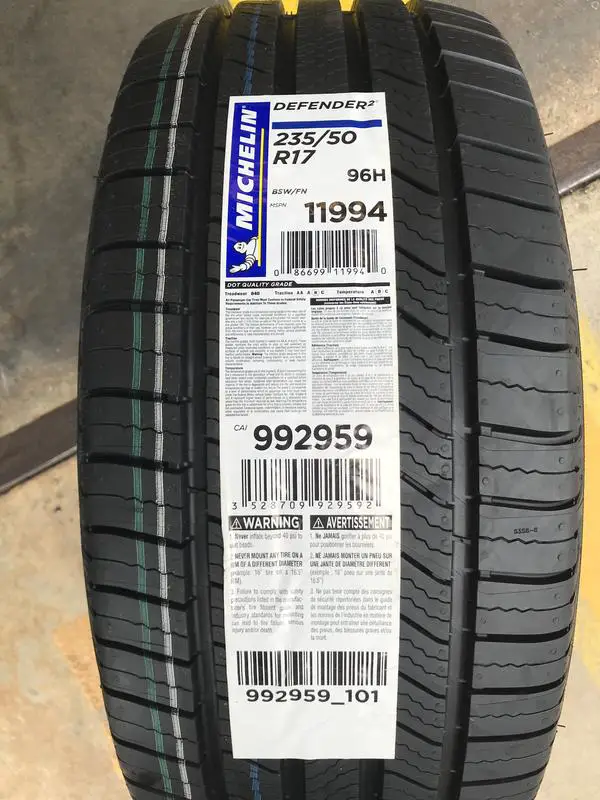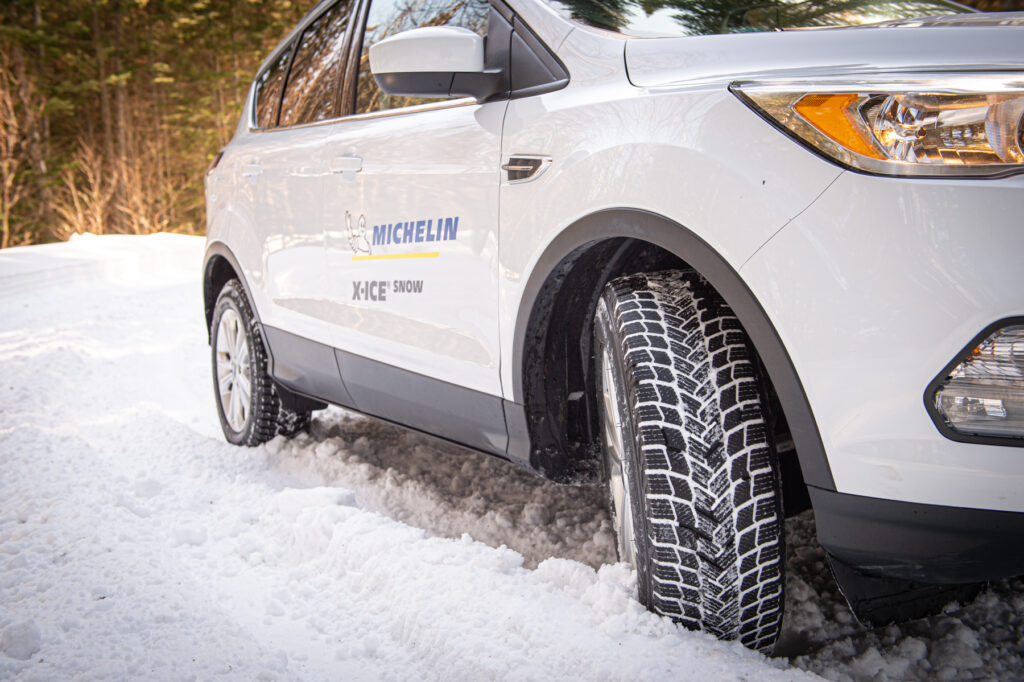When it comes to dominating the road, Michelin is a brand that is renowned for its performance. Michelin Defender 2 and Defender T+H are two such contenders for its amazing lineup.
Michelin Defender 2 has better dry road performance and treadwear resistance. You will also get a quieter ride and better fuel economy if you go for Defender 2. However, Michelin Defender T+H has better-wet road and winter performance. It also offers a more comfortable ride. In terms of average weight, Defender 2 is heavier than Defender T+H.
Now, both of these tires are designated to show exceptional performance and durability. So, you are in for a ride choosing any one of them. But, for the best performance, you need the one specialized for you. To get a detailed idea of what to choose, let’s get started!
Michelin Defender 2 VS Defender T+H: Quick Difference
To get a short overview of the difference between Michelin Defender 2 and Defender T+H, check the table below.
| Factors | Michelin Defender 2 | Michelin Defender T+H |
| Dry Road Performance | Better | Good |
| Wet Road Performance | Good | Better |
| Treadwear Resistance | Better | Good |
| Noise | Better | Good |
| Comfort | Good | Better |
| Fuel Economy | Better | Good |
| Winter Performance | Good | Better |
| UTQG Rating | 840 | 820 |
| Treadlife Warranty | 80,000 miles | 80,000 miles |
| Average Weight | 24.18 lbs | 19.56 lbs |
| Wheel Rim Options | 16, 17, 18, 19, and 20 inches | 15 and 16 inches |
| Available Size Options | 39 sizes available | 5 sizes available |
| Cost | $160 to $250 | $145 to $215 |
From the table, a basic overview can be obtained of Defender 2 and Defender T+H. You can see the clear distinction between the two models and Defender T+H is the less costly option. You also get more options from Defender 2.
This is a good review for Defender T+H Michelin Defender T+H Review – Try It, Watch It, or Trash It?. This is a review of Defender 2 Testing the Michelin Defender2 2022 | Tire Rack.
Michelin Defender 2 VS Defender T+H: Detailed Description

Now let’s get into the details of comparing Defender 2 and Defender T+H. Here, we cover each of the important factors to consider for a performance tire.
Dry Road Performance:
When it dry road performance you have to consider both the dry traction and handling of the tire. Dry traction implies how good of a grip the tire is going to have. But dry handling means how efficiently the tire can be controlled for steering response, cornering stability, and braking.
Dry Traction:
Dry traction performance means dry grip. A better grip for the tire is offered when it has high contact patch and a more robust tread compound. Michelin Defender 2 outperforms Defender T+H when it comes to better grip. This is because it uses a large contact patch which accounts for superior traction and increased grip.
However, Defender T+H uses lateral gaps between its tread blocks. This compromises the overall rubber-to-road contact efficiency. So that’s why it slightly lags in terms of dry grip.
Dry Handling:
The dry handling performance of the tire depends on the shoulder’s contact patch and the rubber’s flexibility. Once again, Defender 2 performs better than Defender T+H. This is because of the compact shoulder lugs in its tread design that comes from a stiffer rubber compound.
So, when it comes to dry road performance, Defender 2 shows better performance than Defender T+H.
Wet Road Performance:
Two important factors affect the performance of wet roads. Traction on wet roads and hydroplaning resistance. Traction and hydroplaning resistance are both excellent characteristics of an ideal tire. Because it means that the tire will have the required grip and not skid on a slippery surface.
Wet Road Traction:
Wet road traction means how good the grip of the tire is. Often this boils down to how good the biting edges of the tire are. A better edge means better grip and more it can travel through slippery conditions.
Normally more biting edge in the tire means that the grip will be better in the tire. Thanks to the IntelliSipe technology, Defender T+H tires come with more biting edges than Defender 2 and that means it will have superior grip on slippery surfaces.
Hydroplaning Resistance:
Hydroplaning resistance is the ability of the tire to resist water formation beneath the tire. If the water layer is formed then the tire will be prone to losing friction with the road surface. Defender T+H is better at expelling the water laterally. That is why Defender T+H is better at hydroplaning resistance.
So, when it comes to wet road performance, Defender T+H shows better results than Defender 2.
Treadwear Resistance:
UTQG is a good indicator of the durability and treadwear resistance of the tire. The higher this rating, the better will be the performance in terms of durability. Michelin Defender 2 has a higher UTQG rating than Defender T+H and this shows that Defender 2 has better durability.
Defender 2 has been tested to give around 25,000 more miles on the treadwear test. In comparison to the leading tires, this is over 02 years of extra tread life. So, for better durability, you should go for Defender 2.
Noise:
A tire gets noisy because of airflow. The air gets in the shoulder gaps of the tire tread and then hits the wall around. This hitting is what makes the tire noisier.
The quiet ride capability of the tire depends on its construction. For example, Bridgestone Weatherpeak is a bit noisy on the pavement as it is an all-season tire.
Michelin Defender 2 tire is designed with J-shaped outer grooves that are combined with ridges/connectors between the shoulder blocks. This restricts the flow of too much air from getting in. Along with that, the lug in the middle enables variable pitch patterns that dampen the noise level.
On the other hand, Defender T+H brings in more in-groove resonance and that is why it is louder.
So, if you are looking for a quieter ride, go for Michelin Defender 2.
Comfort:
By tire comfort, we mean how much vibration it can handle. A comfortable ride means that it can handle vibrations better. Normally, tires that are made with softer compounds are better at handling vibration.
Unlike low-profile tires, the pressure in both of these tires is over 40 psi. So, make sure to check the pressure range in the manufacturer’s recommendation and keep it inflated properly. This will ensure a comfortable ride.
Among the two options, Defender 2 consists of a single polyester casing but a stiffer rubber layer. This is why Michelin Defender T+H is the more comfortable tire.
Fuel Economy:
Tire’s fuel economy is impacted by the rolling resistance. This rolling resistance depends on the tire’s tread composition and weight. Another important factor is the tread compound. The softer a compound is, the more it will be sticky.
Michelin Defender T+H is lighter but it is made with a softer compound. Although is a good option for comfort increases the fuel consumption rate.
So, if you are looking for a tire with better fuel economy then go for Michelin Defender 2.
Winter Performance:

Neither Defender 2 nor Defender T+H are dedicated winter tires. They are not even branded with the 3 Peak Mountain Snowflake rating. But in comparison, the tire with more biting edges will have relatively better performance in colder conditions.
Since, it has already been discussed that Defender T+H has the IntelliSipe technology, which means it uses more biting edges. That means it will have a better outcome in winter conditions as well.
So, although none of these are winter tires, Defender T+H will show comparatively better results during winter conditions.
Frequently Asked Questions (FAQs):
Can Michelin Defender 2 Be Used on Sandy Terrain?
No, Michelin Defender 2 can not be used on sandy terrain. This is an on-road tire that is suited for passenger cars and SUVs. Whereas for sandy terrain, off-road tires are a better choice. The difference in the tread design and tread pattern is why you should not use Defender 2 in sandy conditions.
Is Michelin Defender T+H Good for High-Performance Driving?
No, Michelin Defender T+H is not good for high-performance driving. Defender T+H comes with an H-speed rating. This means it can go to 130 mph max comfortably. But for high-performance driving, you need a tire with a W or Z speed rating which can easily go over 186 mph.
Can Michelin Defender 2 Be Used on Station Wagons?
Yes, Michelin Defender 2 can be used on station wagons. Defender 2 is an on-road tire that is compatible for use in both passenger cars and SUVs. This is a part of Michelin’s flagship touring all-season product line. That is why it has the size and structure necessary for high-performance and large-capacity vehicles.
Conclusion
In conclusion, when it comes to the Michelin Defender 2 VS Defender T + H comparison, both tires show amazing performance and reliability. Whether it is the enhanced durability or improved tread life, remember the main priority. Because ultimately the choice comes down to your specific needs and preferences. With Michelin’s commitment to quality and innovation, you can trust either of these options to get excellent performance.
